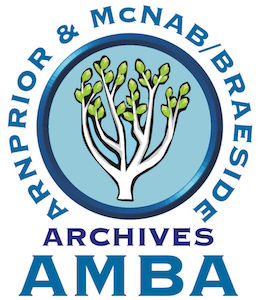2023 Archives A-Z: Photography Edition
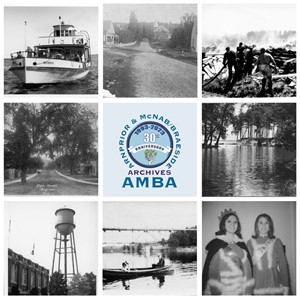
For this year's instalment of Archives A-Z, we decided to focus on photographs from our collection.
We chose one beautiful photograph for each letter of the alphabet, posting daily from April 3-29. The photographs showcased moments in the history of Arnprior and McNab/Braeside, generating lots of discussion ond interest on social media.
Here are the posts collected together!
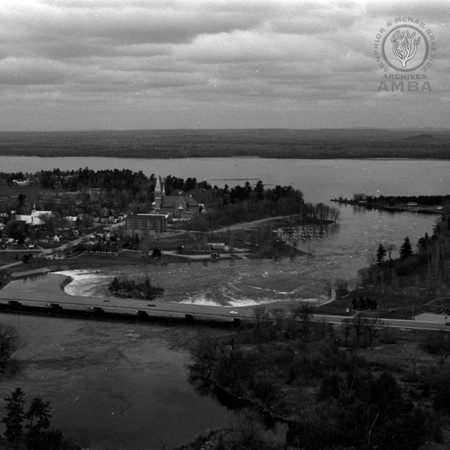
A is for Aerial Photograph.
This photo shows an aerial view of Arnprior where the
Madawaska River meets the Ottawa. It was taken for
the Arnprior Chronicle Guide on April 29, 1992.
How has this area changed in the years since 1992?
Photo: http://bit.ly/40Pccq1
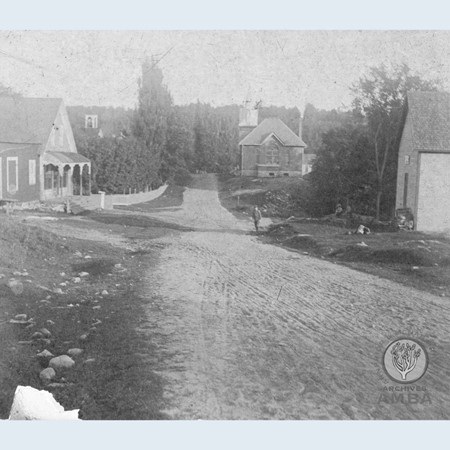
B is for Burnstown.
This view of the main street of Burnstown looking east
circa 1913 includes (from left to right) the general store
(now the Blackbird Cafe), the roof of the schoolhouse
(now the Neat Cafe), Burnstown United Church, and
the Good Templar's Hall (now the post office).
Photo: http://bit.ly/3Mdz52v
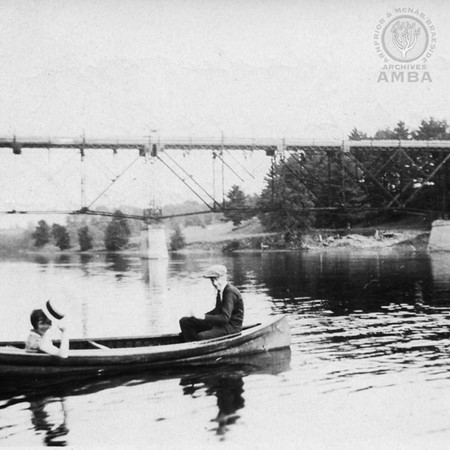
C is for Clay Bank.
This photo, taken about 1906, shows a couple in a
canoe on the Madawaska River at Clay Bank. In the
background is the Clay Bank bridge that was erected in
1906 to connect White Lake to Arnprior. This bridge
has been repaired and rebuilt multiple times since the
very first was erected in 1869.
Photo: http://bit.ly/3U6nnbJ
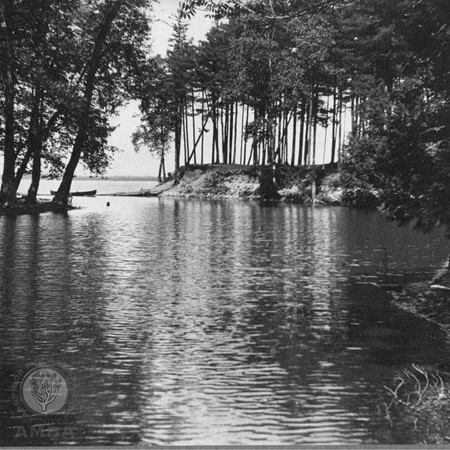
D is for Dochart Creek.
This beautiful image was taken around 1929 by Edward
Malloch (1890-1968). It shows the mouth of the
Dochart Creek at the Ottawa River.
Photo: https://bit.ly/3zxsxEf
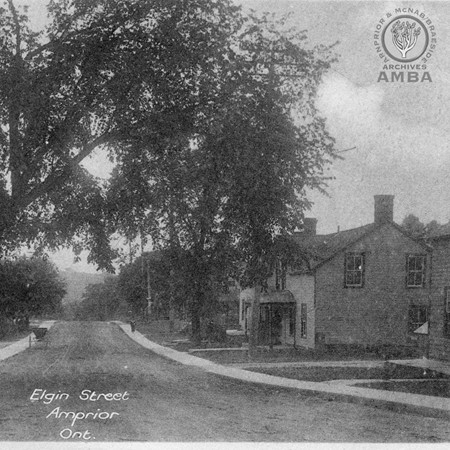
E is for Elgin Street East.
This image is from a postcard taken circa 1910 that
shows a view of Elgin Street East from Daniel Street
looking towards the Madawaska River.
Photo: http://bit.ly/3nWApwI
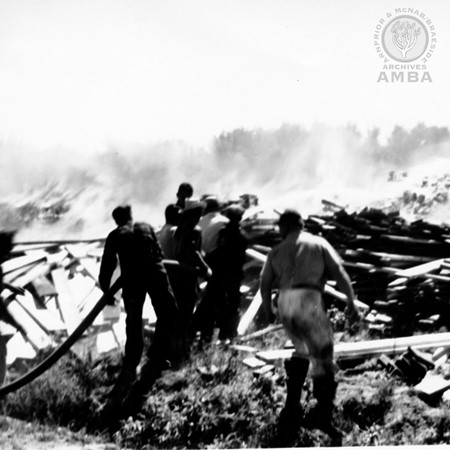
F is for Fire!
This photo, captioned 'The Big Fire', was taken in 1910
at the Gillies Bros. lumber yard in Braeside. Workers
were scrambling to put out a blazing fire in the yard,
one of a number of fires that damaged the mills over
the company's long history.
Photo: https://bit.ly/3mhnnt0
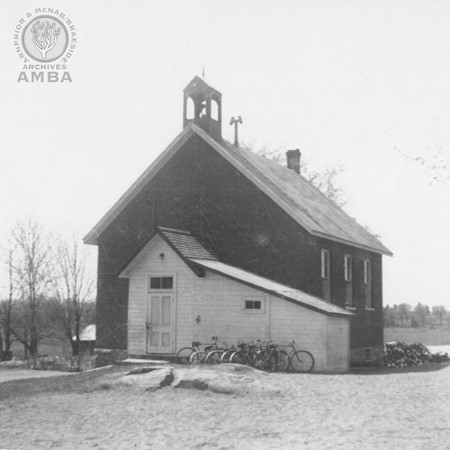
G is for Glasgow.
This photograph was taken of the school house (McNab
School Section 13) located in Glasgow Station in 1952
. Built in 1905, the structure still stands today. The
bicycles piled up outside indicate that class was in
session!
Photo: http://bit.ly/3KJfEgR
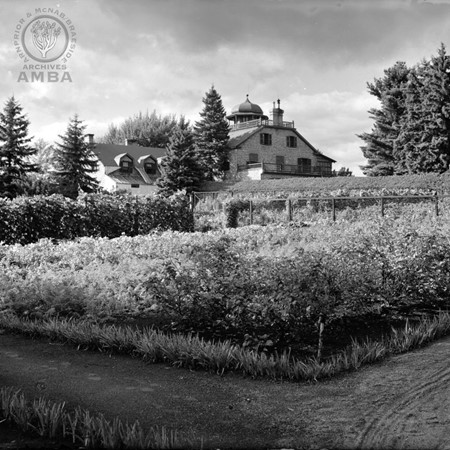
H is for the Hill.
This photograph, taken by Charles Macnamara, shows
"The Hill" and its vegetable garden in 1902.
Constructed beginning in 1853, Daniel McLachlin
moved in with his family in 1859. In 1946 it was sold to
the Oblate Order of Mary Immaculate and in 1975, it
was developed into a spiritual retreat centre known as
the Galilee Community. It remains the Galilee Centre to
this day.
Photo: http://bit.ly/43m7MZN
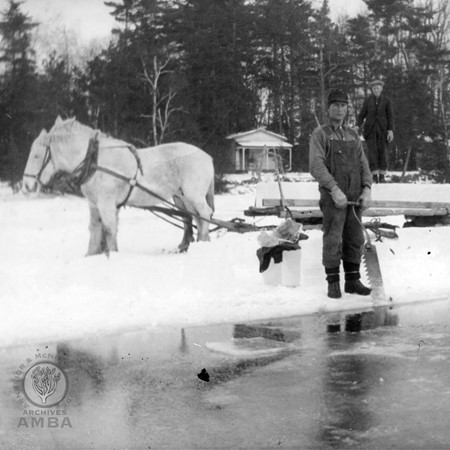
I is for Ice cutting.
This photograph shows a team of horses with a load of
ice and men with ice saws at the edge of a lake, in the
midst of cutting the lake ice into blocks. Before modern
refrigeration, ice harvesting from frozen lakes and
rivers was an important winter chore and even an entire
industry!
Photo: http://bit.ly/3UnpAzG
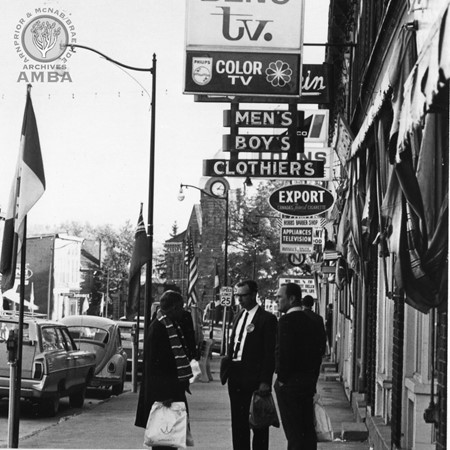
J is for John Street.
This photograph of John Street in 1968 captures a
candid moment on the east side of the street looking
towards the museum. The caption reads "Chit-Chat on
Main Street - A Last Farewell to Arnprior." The photo
was taken on the occasion of a visit to Arnprior by a
lumbering company from Michigan.
Photo: http://bit.ly/3MwTAat
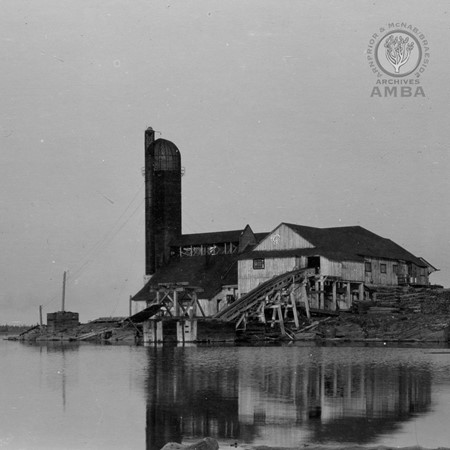
K is for Klondyke Mill.
This is a photograph of the Gillies' Bros. Klondyke Mill
in Braeside. Opened in 1899, The Klondike Mill
produced cedar shingles and railway ties. A 1909
newspaper article reported that the mill had the
capacity to produce 150,000 ties and 35,000,000
shingles in one season.
Photo: http://bit.ly/41cUhKg

L is for Locomotive.
This photograph shows Mr. George Lewis leaning out
the left window of McLachlin Bros. No. 1 freight train,
around 1920. The caption reads “Coal Oil, Internal
Combustion Locomotive - McLachlin Bros. Ltd.
Arnprior, Ontario”.
Photo: http://bit.ly/43jHW8S
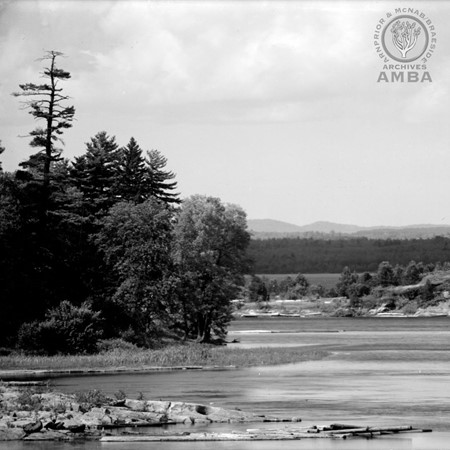
M is for Madawaska.
Charles Macnamara took this photograph with a
telephoto zoom lens in July, 1908. He is looking north
towards the mouth of the Madawaska, where it meets
the Ottawa River.
Photo: http://bit.ly/3nW7Y1J
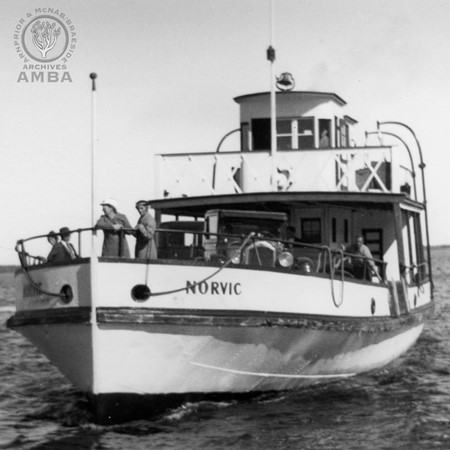
N is for the Norvic Ferry.
This image captures the Norvic Ferry as it is coming to
shore around 1935. Unidentified passengers, crew and
an automobile are on deck. The Norvic operated
between the Norway Bay wharf on the Quebec side of
the Ottawa River to Sand Point in Ontario.
Photo: http://bit.ly/3o1PgWt
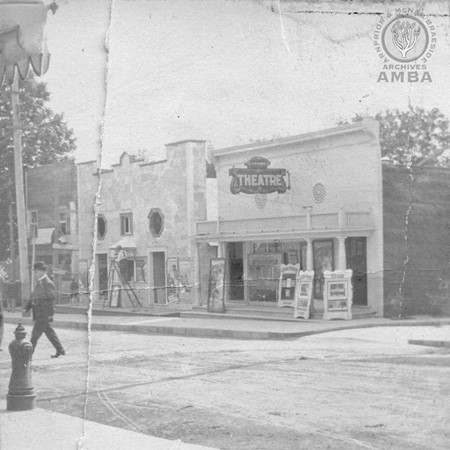
O is for O'Brien Theatre.
This photograph was taken about 1913 and shows the
very first O'Brien Theatre in Arnprior, when it was
called the Casino Theatre. John S. Phillips opened the
"Theatorium" on this site in 1906. He sold it to the
Ottawa Valley Amusement Company, which changed its
name to the Casino Theatre. They later renamed it the
O'Brien Theatre in 1919, which it is still known as
today!
Photo: http://bit.ly/3KX5cCI
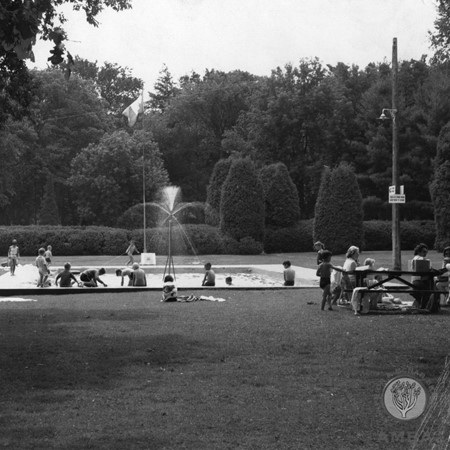
P is for Park.
This is a photo of the wading pool at Robert Simpson
Park in 1965. It is one of many photos of recreational
activities around Arnprior from the Town of Arnprior
fonds.
Photo: http://bit.ly/3zVQUvw
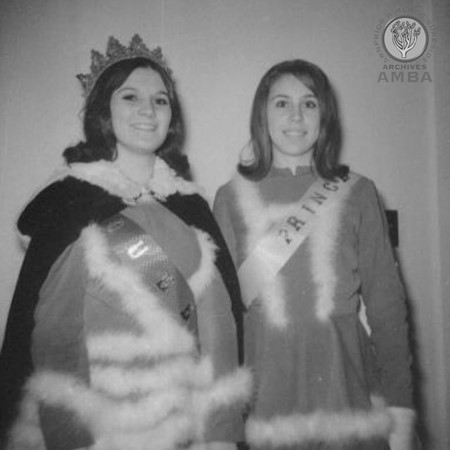
Q is for Queen.
This photograph from the Braeside Women's Institute
fonds is of the Winter Carnival Queen and a princess at
the Braeside Winter Carnival in 1967. Can you identify
the women in this photo? Let us know in the comments!
Photo: https://bit.ly/41lmSNu
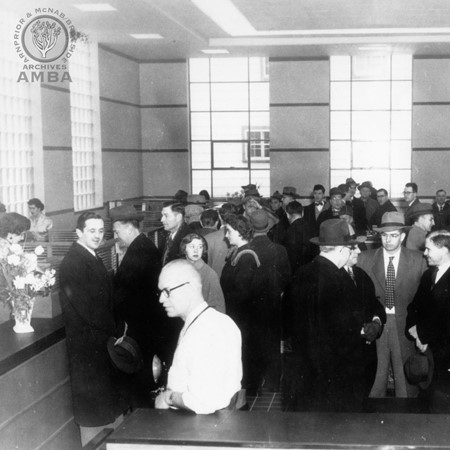
R is for Royal Bank.
This photograph captures the opening of the Royal
Bank's new location on John Street in 1954. Click the
link to the photo below to see identifications of those
pictured here. See someone we haven't identified? Let
us know!
Photo: https://bit.ly/3LgYKql
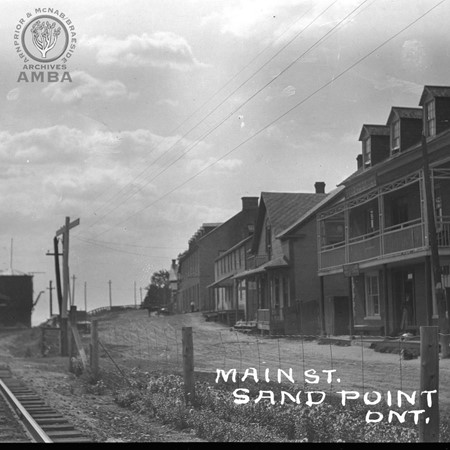
S is for Sand Point.
This Handford Studio photograph was taken about
1909. It pictures the main street in Sand Point from the
River Road, looking East towards Braeside and
Arnprior. On the left is the Canadian Pacific Railway.
Photo: https://bit.ly/40nG24q
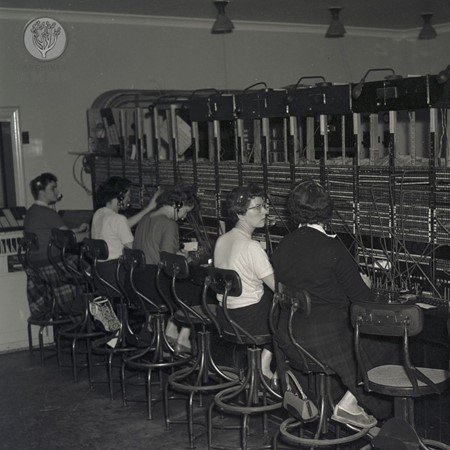
T is for Telephone.
This photo, from the Normand Babineau photography
collection, shows telephone switchboard operators hard
at work at Bell Telephone Co. in October of 1959. Do
you recognize someone in this photograph? Let us
know in the comments!
Photo: https://bit.ly/3mFfuhs
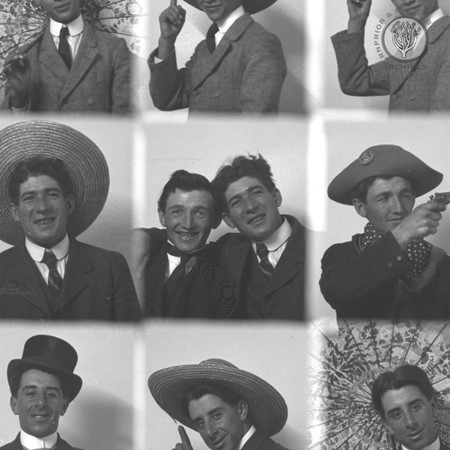
U is for Unidentified.
The archives has hundreds of photos that are not yet
identified. This glass plate of miniature portraits was
taken in about 1907 and is part of a collection of
photographs in the Peter Wilson fonds that were taken
by an unknown Arnprior-area photographer. Recognize
anyone? Let us know!
Photo: https://bit.ly/3UOpOjJ
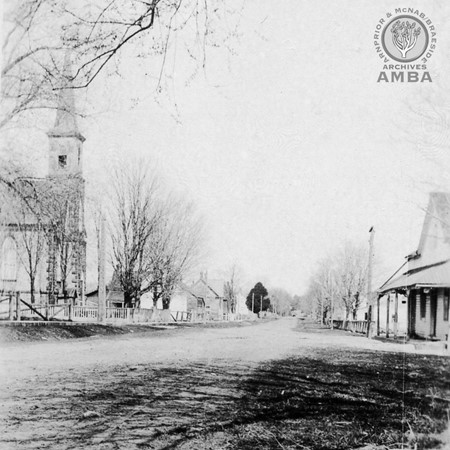
V is for Village.
White Lake is just one of McNab/Braeside's beautiful
villages. This is a photograph of the main street in
White Lake in 1919 looking west and includes the
United Church on the left and Ostler’s store on the
right.
Photo: https://bit.ly/3oqd8DD
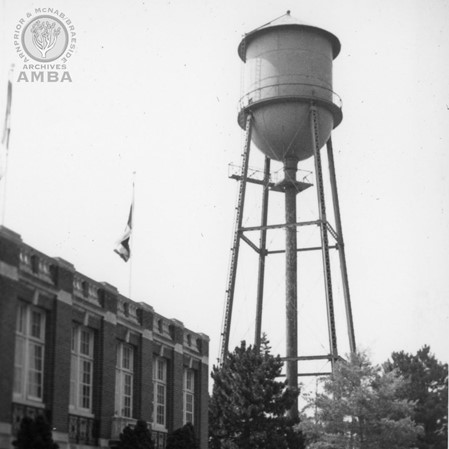
W is for Water Tower.
This is an image of the water tower at the Kenwood
Mills, date unknown. Founded in 1918, Kenwood was at
one time the largest employer in town with 300
employees. The plant was later taken over by
Weavexx, which closed its Arnprior operations in 1996.
Photo: https://bit.ly/3LduZql
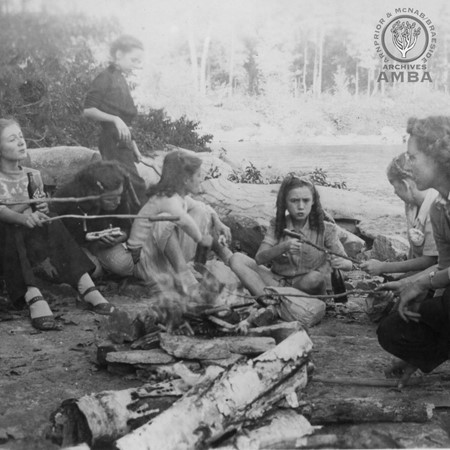
X is for X-pedition! (We had
to get creative with this one 😅)
This photograph, from the Carol Dieltgens fonds, shows
the Girl Guides around a campfire while on a guiding
expedition around 1949 in the Arnprior area. The leader
on the right is identified as Karen Shaw.
Photo: https://bit.ly/3V3RP6N
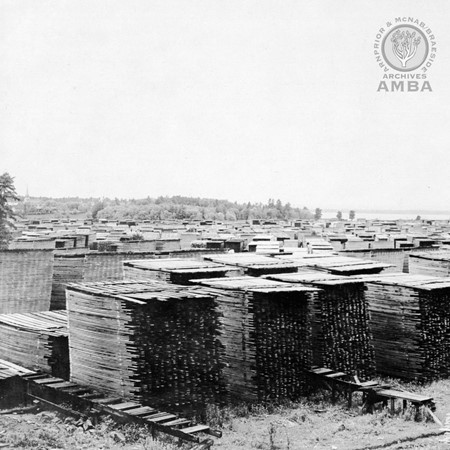
Y is for Yard.
This image is from a 1924 album of the McLachlin Bros.
Lumber Company. It shows the company's vast lumber
yard on the east side of the Madawaska River. If you
look closely to the left, you can see the Roman Catholic
Church on John Street in the distance.
Photo: https://bit.ly/3UZwXxN
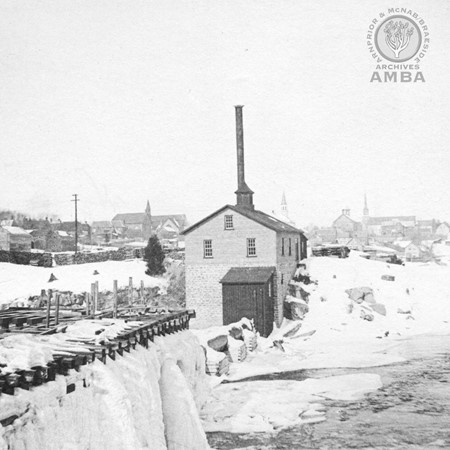
Z is for ⚡️Zap!⚡️
This photo of the Arnprior Electric Light Company
station was taken by Charles Macnamara in 1894. The
station was originally used to power the lights for the
McLachlin Bros. Lumber company. Later, it was also
used to provide electric light to Arnprior's streets.
Photo: https://bit.ly/3AnCl42
Thank you to everyone who followed, liked, shared, and commented on our posts. We hope you enjoyed this peek into our past and learned something new about our local history!
AGM Event: Archives in Your Attic!Earlier Posts
2023 Archives A-Z: Photography Edition
AGM Event: Archives in Your Attic!
All About Ledgers in the Archives
Inside the Vault: Vinegar Syndrome
Archives A-Z: AMBA's April Social Media Posts
Inside the Vault: Women's Institute Collections
Inside the Vault: The Handford Studio Collection
Behind the Archives' Door: The Newspaper Project
A brief history of Robert Simpson Park
Graveside Stories: Senator J. J. Greene
Graveside Stories: Lindsay's Store
Graveside Stories: Finding Kathleen
Graveside Stories: the Cameron Family
